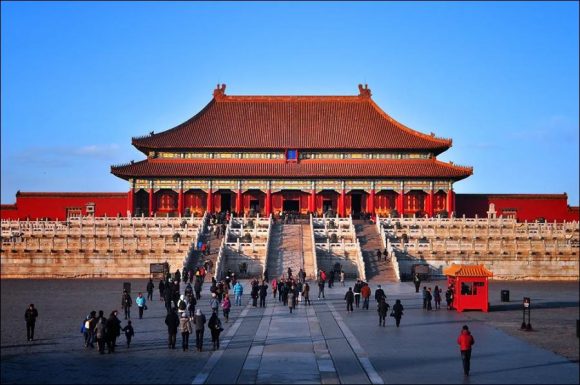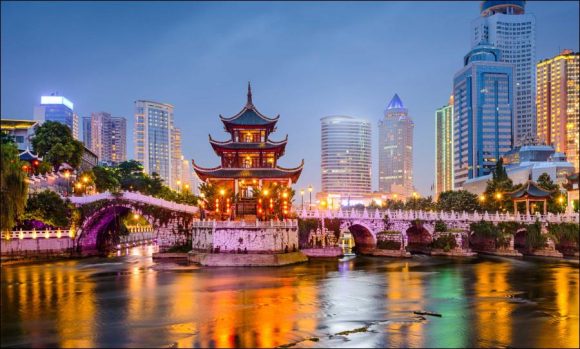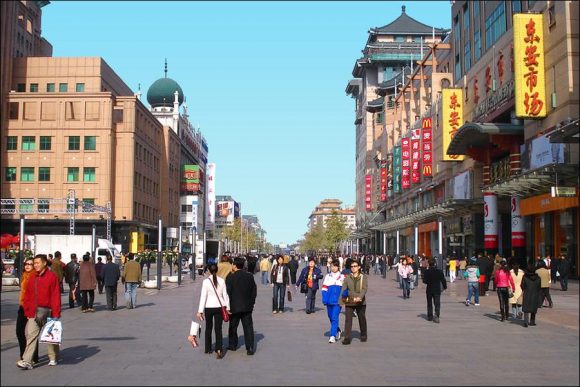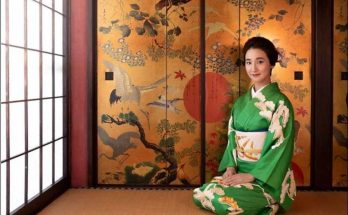The magnificent Forbidden City of the Chinese Empire, which has been the venue for many films, is the largest wooden structure on earth, the length of which reaches a thousand and 800 meters in width.
I will not say “I saw a country, my life has changed” but I have learned that “it was different to see”; this article was caused by seeing more than the book.
China… The second largest economy in the world after the USA; It is one of the top exporting countries with exports of 2.5 trillion dollars, even though its growth rate has fallen to 5-6 percent, 35 percent of the global product belongs to this country… The domestic market was 375 million dollars in 1995 and 12.2 trillion in 2018 it went up to the dollar; Among the top 500 companies in 2018, there are 129 companies (more than the US) and 475 billionaires with a wealth of more than $1 billion.
Tens and hundreds more numbers can be given; these are useful for understanding China’s growth, which fits 30-40 years and is called miracle… Seeing is completely different!
The issue of how to get here is not known, but it can be said that the basis of the change is the needs of globalizing capitalism and China’s decision to open up and go to the free market: Deng Xiaoping is the architect of this change after 80. At the end of the decision to build a “socialist market economy” at the Chinese Communist Party (CCP) Congress in 1992 and the constitutional amendments that liberalized wealth and property relations in the 2000s, today the claim of socialism with the indisputable power of the Communist Party was preserved.
We have a different structure in which we moved to the private sector. Public ownership, which reached 70 percent of the national income in 1978, dropped to around 30 percent in 2015, and 95 percent of the housing stock became privately owned1: The situation is different in terms of stocks; 60 percent is still in the hands of the public, 30 percent of Chinese citizens, and 10 percent of foreigners. With this change, the dance of “capitalism with dragons” begins, which is interesting in all aspects.
The name of Alain Peyrefitte’s two-volume book published in the mid-70s was as follows: “When China wakes up, it plays from the ground”; I think the word of awakening about China started like that. In the book, the revolutions that started with Mao in 1949 after the Empire period, which was strong but not able to be heard outside, and became semi-colonial in the 19th century against the West, describe radical steps towards strengthening the sense of self-confidence and collective consciousness. “Let China sleep, let alone China,” after 80, this first awakening, which came to the fore as a political revolution, became more real with economic reforms. If it is thought that the word “wakes up if it wakes up” has found its place after this, it may be more appropriate to use the word “awakening” today.
As for the dragon conversation, the dragon is the mythological hero of the Chinese empire; In the past, it was the symbol of the power of the empire and the people of China, and today it is a symbol of national unity… It is known that the Chinese call themselves “descendants of the dragon”. When you go to China, it is possible to see the dragon everywhere, from huge sculptures to stone reliefs, from roofs to rain gutters, from door knockers to emperor’s clothes, from golden jewels to jade sculptures. While countless dragon figures are mentioned in the Forbidden Palace, it is said that there are 13.000 dragon figures in the Talhe hall where the emperor’s golden throne is located.
Unlike the dragon of the West, Chinese dragon represents power and protection, not evil; It has positive features such as nobility, calmness, benevolence, generosity, and abundance; There is also the ability to go into different costumes.
When I saw Beijing, which became a skyscraper forest after leaving the Forbidden City equipped with dragons in our first stop in Beijing, yes, I thought that this change would suit “the awakening of the dragon”.
There is no such expression in China, however, they are aware and proud of the “awakening”. For example, in the 19th Congress of the CCP in 2017, it seems that the Chinese model emphasized self-confidence and self-reliance in its culture with the decision of “a socialism in Chinese character in the New Age”.
Even though the reality of awakening is evident, “Waking up Chinese Dragon or capitalism?” A question such as is on the agenda.
For example, China is no different from any capitalist country, not only with its economic figures and power in the global market, but with its huge cities, competitive lifestyle, people focused on success and consumption.
In contrast, like the absolute power of the Chinese Communist Party (CCP), there is a market economy that differs in terms of the importance of public enterprises and ownership structure. Therefore, the debate on whether it is communist, capitalist or state capitalism continues.
In this case, if we set out from the beloved dragon, why not an analogy such as “the meeting or dance of capitalism with the dragon”? For now, they are coming together to make a path (dance) in the character of Chinese with socialism (including its past, socio-economic structure, cultural characteristics) and market and capitalization.
However, if we consider the conditions of working and living with big cities, it can be said that the rudder in the “dance of capitalism with Chinese dragon” broke apart from capitalism, but it is obvious that the dance continues; it is hard to make a definitive judgment. For example, with the change in internal and external conditions, it is possible for the CCP to increase its control over the market and to act more flexibly. So dance can continue or end. In short, it is an interesting meeting; It is also a matter of wonder where it will arrive.
Next Page: Searching for history in mega cities.
Visits: 72





